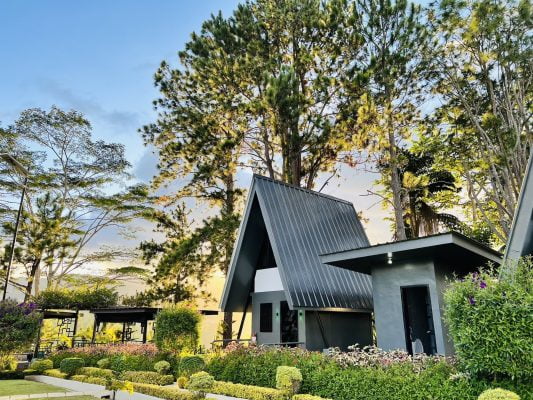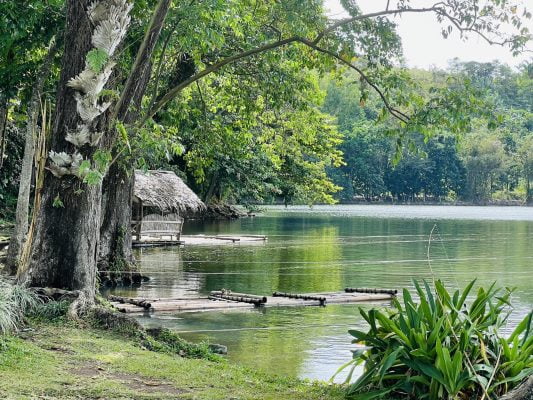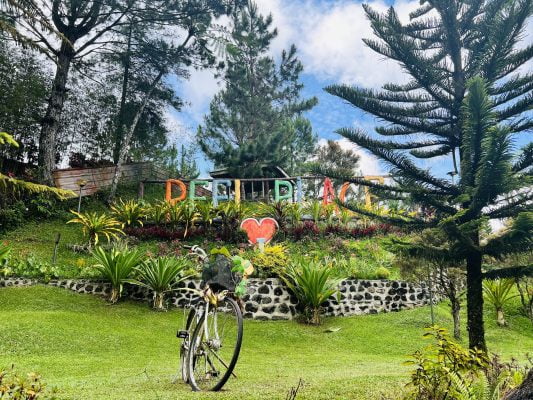The Philippines has gone a long way from being a country of Indios to becoming one of the up-and-coming economies in SouthEast Asia. In fact, the country has the 4th highest GDP among member countries of the ASEAN.

The islands have become a melting pot of modern industries with its people as its main assets. Towering skyscrapers and state-of-the-art amenities are reshaping the landscape of key cities in the Philippines, ushering in global companies to set up shop in the country.
What are the most modern cities in the Philippines? According to Business World, the top 10 highly urbanized cities in the Philippines are Quezon, Manila, Davao, Pasay, Makati, Pasig, Cagayan de Oro, Muntinlupa, Iloilo, and Bacolod. Six cities are in the Metro Manila area, two in the Visayas, and two in Mindanao.
If you would like to experience the best that the Philippines has to offer, spend a few days in these cities and soak in the myriad of cultures and meet the beautiful people that make them all fantastic.
Quezon City

The largest and most populated city in Metro Manila takes the top spot in the list of the most modern and most competitive cities in the Philippines. Quezon City is a bustling urban center that is home to modern infrastructure, significant historical landmarks, prestigious universities, and excellent shopping centers.
Ninoy Aquino International Airport (NAIA) is south of Quezon City. Depending on the time of day and traffic conditions, it takes about 45 minutes to 3 hours to get to Quezon City from the airport. Point to point (P2P) buses can easily take you from the airport to Araneta Center in Quezon City but you can also hail a cab or book a ride through Grab.
As with all cities in the Greater Manila Area, it is very easy to get around Quezon City. Your choice of transportation will depend on how comfortable you want to be, how much you’re willing to pay, and where you want to go. You can ride a public bus, the Metro Rail Transit (MRT), a jeepney, or a taxi to get around most of the city. For shorter trips along narrow roads, tricycles get you from point A to B.
EDSA, one of the busiest thoroughfares in Metro Manila, passes by Quezon City. In fact, the People Power Monument which marks the silent revolution that restored democracy in 1986 is located in the city. Quezon City has since evolved into a bustling commercial center that never sleeps.
Manila

The country’s capital comes as a close second in the most modern cities in the Philippines list. Manila is the beating heart of the Philippines, with government and economic centers located in its busy landscape. It is also one of the most densely populated urban centers in the world.
Manila is insanely congested and the traffic conditions have been described as hellish. But the city remains to be a beautiful and interesting place to visit, if only for the breathtaking view of Manila Bay. This ultra-modern city offers a great mix of historic, cultural, entertainment, and shopping destinations.
Depending on what you choose as mode of transport, the City of Manila is about 30 minutes to an hour from the NAIA. Manila taxi drivers are generally trustworthy but a handful may rip you off the moment you close the cab door. Insist on using the meter and get out if he wants a flat rate. You can walk around Manila or ride a jeepney, tricycle, bus or the MRT.
You will not run out of fun things to do in Manila. The city is home to the largest Chinatown outside of China which is located in Binondo. Authentic Chinese food, feng shui experts, good luck charms, and excellent (cheap) shopping are some of the things you can find in this little corner of the city.
If you’d like a peek at Philippine history, Intramuros is a great place to start. Traveling with kids? Manila Ocean Park will definitely make them love marine animals more! Top the day off with dinner on a cruise around Manila Bay at sunset.
Davao

Good governance has made this city in Mindanao one of the best places to live and visit in the Philippines. Its modern landscape is spread across a vast area of mountains, rolling hills, and plains. Davao is not just one of the most modern cities in the Philippines; it is also the largest city in the world in terms of land area.
Davao City is the best first stop if you are exploring Mindanao. For one thing, it has an international airport so you can fly in directly. Davao is a two-hour flight from Manila and Clark, and an hour from Cebu. Traffic is a little more tolerable in Davao City, with wider streets and generally more considerate drivers.
You can get around Davao City the same way you do in Manila minus the MRT and LRT. Buses ply regular routes around the city but the main mode of transportation in the downtown area is jeepneys. Tricycles and for-hire motorbikes get you around residential areas.
Davao City is a nature lover’s paradise. Mt. Apo, the highest peak in the Philippines, stands over the city, ready to be explored. Its forests are home to amazing creatures like the national bird, and the monkey-eating eagle. Davao is abundant with fruits like durian, mangosteen, marang, and pomelo.
The city is also a 10-minute ferry ride to Samal Island where you can find beaches that can rival the best in the country.
Pasay

The City of Pasay is one of the 6 key cities in this list that is part of the Metro Manila area. This accessible city is an excellent hub for travel all over the Philippines. For one thing, it is an important terminal for the Strong Republic Nautical Highway which connects the Philippine islands from north to south. Buses regularly ply this route, hopping on ferries to get from island to island, making Pasay a great springboard for travel.
NAIA is partly located in Pasay City so getting to your destination is a no-brainer. Travel time from the airport to your hotel should not take more than an hour, even in midday traffic. You can get around Pasay City using any of the modes of transport already mentioned.
Being part of bustling Metro Manila, Pasay is home to several business districts and world-class shopping centers. Case in point: SM Mall of Asia, one of the largest shopping malls in the world. The mall complex is large enough to occupy your days with its attractions. It has an amusement park, a great number of restaurants, and movie theaters. The MoA Eye, the tallest Ferris wheel in the Philippines, offers breathtaking coastal views.
Makati

Dubbed by many as the New York of the Philippines, Makati has been the financial center of the Philippines for decades. The city is home to several embassies, accounting for the multicultural local vibe. Makati’s Central Business District plays host to multinational companies, premier shopping hubs, and entertainment centers.
Makati is an easy 30-minute commute from NAIA. A taxi ride from the airport to the city should not cost you more than P200. It is largely a city made for walking around but you can get around by jeepney, bus, train, rented car, taxi, and even motorbikes for hire.
The city is an excellent base for exploring the Greater Manila Area but it is also a destination on its own. The city has something to offer for everyone; it is a foodie’s heaven and a shopaholic’s nirvana. Makati also has offerings for culture seekers, adventurers, and nature lovers.
Despite being one of the most modern cities in the Philippines, Makati has several green spaces that give respite from the stifling urban jungle vibe. The Ayala Triangle Gardens is Makati’s answer to NY’s Central Park while Salcedo and Washington SyCip Park feature artwork installations amid towering trees.
Pasig

Sitting along the banks of Pasig River, this city on the rise has evolved into a thriving business district with a mix of upscale offices, condominiums, and shopping centers. In the past, Pasig was mainly known for the garbage-laden river that also bears its name. Rehabilitation began in the 90s and the river has since recovered and flourished.
Pasig City lies northeast the NAIA, about 30 minutes away by car, passing through EDSA. Traffic in this area can get pretty bad in the morning so it is best to book a flight that arrives at night. Getting around is easy since you have all the options the rest of Manila has.
Ortigas Center, the second most important central business district, is partly located in Pasig. The 250-acre area is home to a great number of shopping centers, condominiums, bars, hotels, and restaurants. Major local and multinational companies like Banco de Oro, HSBC, Parsons Brinckerhoff, and San Miguel Corporation are headquartered in Ortigas.
You can shop and eat to your heart’s content in Pasig. You can take your pick from street food in weekend markets to fine dining options in places like EDSA Shangri-La and everything in between.
Cagayan de Oro

It is a common misconception that cities in Mindanao are more like towns in provinces. While this can be true, Cagayan de Oro is definitely not one of them. Bustling CDO is the gateway to northern Mindanao, with its Laguindingan Airport connected to several important airports in the country.
Cagayan de Oro is an hour and half flight from Manila and an hour from Cebu. There are currently no flights from Davao to CDO. However, you reach CDO from Davao through a scenic 5-hour drive through the Davao-Bukidnon-Sayre Highway. Pick some strawberries and pineapples along the way!
Cagayan de Oro is a port city. The port of CDO opens the city to many business opportunities, making it a commercial hub in the region. Plenty of BPO companies has set up shop in the city. Hotels, restaurants and shopping centers cater to the growing population of young professionals and tourists on their way to Camiguin and Siargao, among other destinations.
Being the white water rafting capital of the Philippines, CDO’s main draw is ecotourism. The grand rapids of the Cagayan River are a magnet for adventure seekers and surrounding towns and islands provide boundless opportunities to enjoy nature.
Muntinlupa

Muntinlupa is the last of the Metro Manila cities that made it to the list of the most modern cities in the Philippines. The city is in the southernmost tip of Metro Manila, bordered by Cavite and Laguna. Munti, as it is fondly called, plays home to the national penitentiary, the New Bilibid Prison.
In stark contrast, Ayala Alabang Gardens, one of the country’s most affluent communities, is also located in Muntinlupa. Real estate developers Filinvest and Ayala Land have transformed Muntinlupa from the vast grasslands of the 1980s to one of their premier residential and commercial centers.
Muntinlupa is less than half an hour’s drive from NAIA through the Metro Manila Skyway. The city is the gateway to CALABARZON where you can find a myriad of attractions like Taal Volcano, Tagaytay’s spas, and Batangas’ beaches and dive spots.
The city is the perfect base for exploring the ultra-modern offerings of Metro Manila and experiencing the laid-back vibe of nearby provinces. Muntinlupa is also home to beautiful churches and historical attractions.
Iloilo

Beautiful Iloilo City is not just a nature lover’s paradise, it is also a highly urbanized city. Iloilo sits on Panay and is one of the gateways to the world’s most beautiful island: Boracay. Being the capital, Iloilo City is the commercial and government center of the province. Its airport is connected to major airports in the country, making it a great base for travel in Western Visayas.
Iloilo City is an hour and a half flight away from Manila and 50 minutes from Cebu. You can also reach the city through fast crafts from nearby islands in the Visayas. Ferries plying the nautical north to south route also pass through Iloilo City.
The city owes its economic boom to the local government’s efficiency and the Illongos’ cooperation. While maintaining its strong fishing and tourism industries, Iloilo has also opened its doors to real estate developments, shopping centers, medical centers, and BPO centers.
Iloilo is a foodie and beach lover’s destination. Frolic in the sands and go island hopping in Islas de Gigantes. Sample the local cuisine and fall in love with the gentle-tongued Ilonggos. Iloilo is one of the oldest cities in the Philippines and you can find historical wonders like Calle Real and Miag-ao Church.
Bacolod

The City of Smiles takes the last spot as the most modern city in the Philippines. What used to be the domain of azucareras (sugar plantations) has evolved into a globally competitive city lauded for being the most improved among Philippine cities.
Bacolod does not have an airport but nearby Silay City does. From Manila, Silay is an hour and half plane ride. You can then take a 30-minute cab ride from Silay to Bacolod. The city is also accessible by ferry, fast craft, and buses from nearby cities like Iloilo and Cebu.
Bacolod holds one of the most popular festivals in the Philippines, the Masskara Festival. If you fancy dancing with revelers wearing masks with wide smiles, come to Bacolod in October. The festival is the closest you can get to Mardi Gras in the Philippines.
In recent years, Bacolod has attracted commerce but it has not turned its back from its heritage. Experience the richness of the local culture through its food, pasalubong, and historic attractions like The Ruins and San Sebastian Cathedral.
Conclusion
With modern cities and idyllic beaches, the Philippines is definitely a charming destination for all sorts of travelers. The country is modern enough to keep you comfortable and backward enough to keep you interested. The people’s hospitable nature perfectly complements the top-notch amenities the country has to offer.






